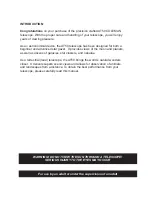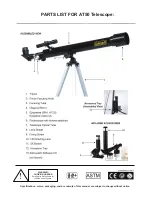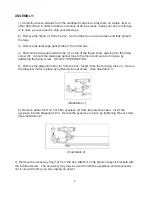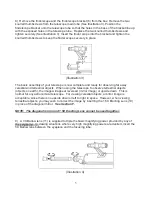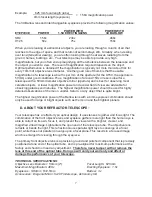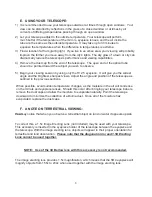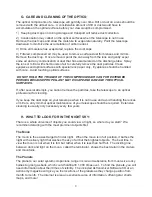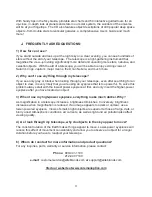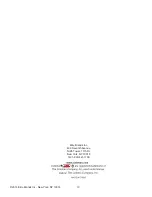
9
G. CARE AND CLEANING OF THE OPTICS:
The optical components of a telescope will get dirty over time. Dirt or dust on a lens should be
removed with the utmost care. A considerable amount of dirt or dust would have to
accumulate on the optical surface before your view would be compromised.
1) Keeping dust caps on during storage and transport will reduce dust collection.
2) Condensation may collect on the optical surfaces when the telescope is not in use.
Remove the dust caps and allow the moisture to evaporate naturally. Point the telescope
downward to minimize the accumulation of airborne dust.
3) Once all moisture has evaporated, replace the dust caps.
4) Filtered, compressed air may be used to remove surface dust from lenses and mirrors.
Remove the dust cap. Once removed, point the can away from the lens and gently expel
some air and any condensation or dust that has accumulated on the discharge tube. Spray
the lens or mirror with short bursts of air to carefully remove the dust particles. Clean
eyepieces and optical surfaces with special lens paper only. Eyepieces should be handled
with care. Avoid touching optical surfaces.
DO NOT HOLD THE TRIGGER OF THE COMPRESSED AIR CAN FOR EXTENDED
PERIODS BECAUSE PROPELLANT MAY ESCAPE AND DAMAGE THE OPTICAL
SURFACES.
If, after several attempts, you cannot remove the particles, take the telescope to an optical
professional for cleaning.
If you keep the dust caps on your telescope when it is not in use and avoid handling the lenses
or mirrors, only minimal optical maintenance of your telescope should be required. Extensive
cleaning is usually only necessary every few years.
H. WHAT TO LOOK FOR IN THE NIGHT SKY:
There is a whole universe of objects you could view at night, so where do you start? We
recommend starting with the most prominent objects first.
The Moon
The moon is the easiest target to find at night. When the moon is in full position, it bathes the
night with a silvery light that washes the sky of all but the brightest objects. The best time to
view the moon is not when it is full, but rather when it is less than half full. The dividing line
between dark and light on the moon, called the terminator, shows the best detail in the craters
and mountains.
The Planets
The planets, our solar system companions, range in size and substance from moon-size rocky
bodies to giant gas balls, which could hold Earth 1,000 times over. To find the planets, you will
need information about their times of visibility. The included Astronomical Software CD or an
astronomy magazine will give you the locations of the planets as they change position from
month to month. The Internet is also an excellent source of information, offering star charts,
maps, and more!


